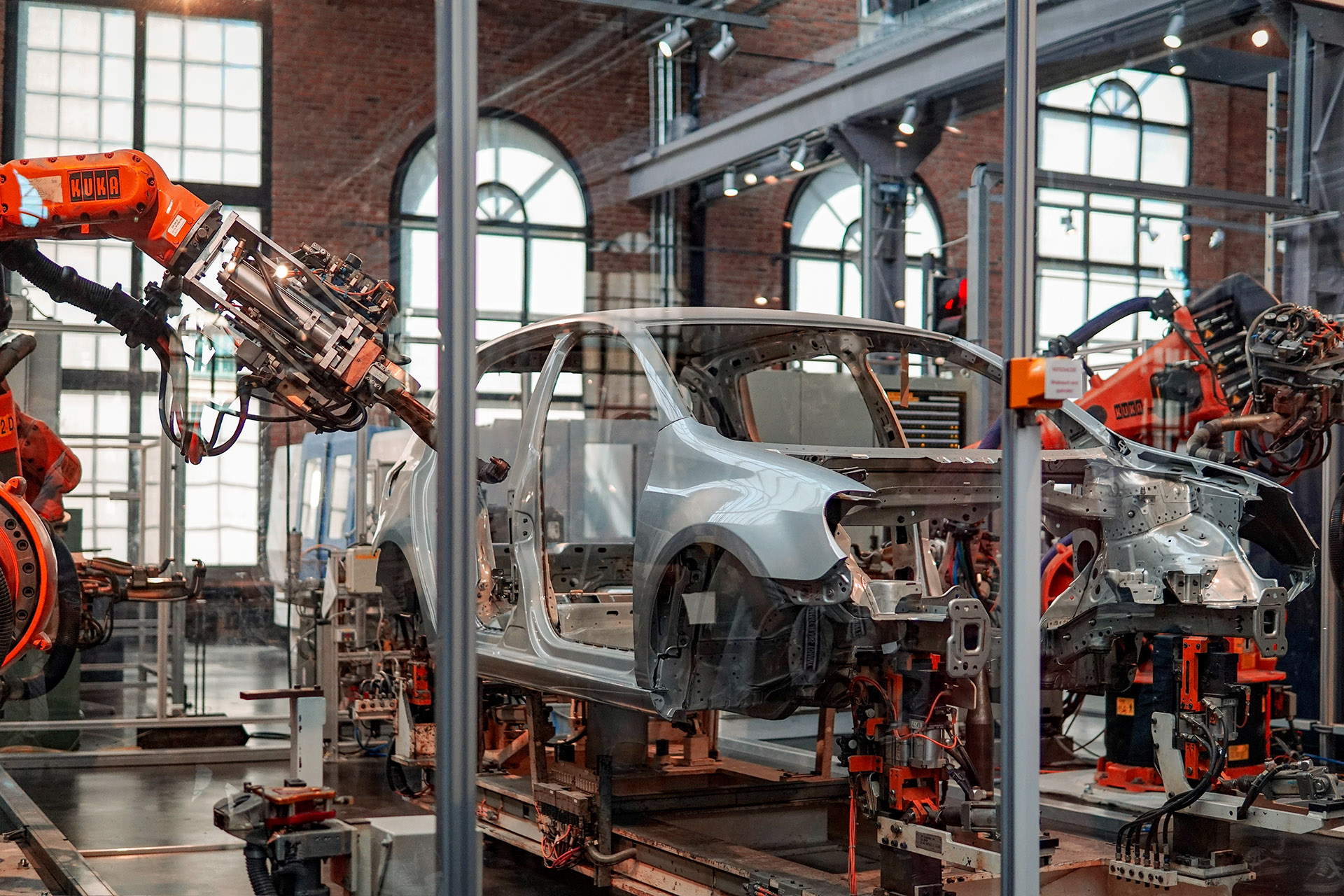A future space for vehicle companies
ReTraNetz-BB, the »Regional Transformation Network for the Vehicle and Supplier Industry Berlin-Brandenburg«, an initiative involving industry, politics and science, aims to actively shape the process. »The German mobility industry is traditionally focused on motor vehicles. The supplier structure so far comprised a lot of mechanical manufacturing,« summarizes Nikolaos-Stefanos Koutrakis, project manager on the Fraunhofer side. As a result of the powertrain transformation, 30 percent of companies now supply electronics. »This creates challenges, but also new perspectives.« ReTraNetz-BB addresses the tasks in a living lab: Not only industry products, but also their production should become carbon-neutral and environmentally friendly. Scaling components to serve vehicles other than cars in terms of both size and performance will become more attractive for suppliers. Plus: OEMs prefer to buy pre-assembled systems, like complete powertrains consisting of a motor, power electronics and battery storage, rather than individual parts. »Therefore we want to integrate parts manufacturers to create virtual system suppliers,« says Koutrakis. Topics such as digital assistance for employees and energy monitoring are also being considered. »We are strengthening Germany as a production location in the process,« says Koutrakis.
Individualized production with cold spray
Additive manufacturing is seen as an innovation driver to individualize vehicle production. Large car parts with complex geometries as well as key components for electric drives can be produced using cold spray technology – highly efficiently and without tools. Fraunhofer IPK operates a robot-guided cold spray system that can be utilized for fabricating electrically conductive copper components and permanent magnets, among other parts. This enables new designs, eliminates assembly steps and streamlines production processes.
Lightweight design meets battery performance
Electric cars still tend to weigh more than those with combustion engines – mostly because of their batteries. Materials such as carbon fiber composites (CFCs) could significantly reduce weight. »However, their low thermal conductivity makes them unsuitable for batteries,« says Aybike Yalçınyüz, a researcher in the field of joining technology. One solution is to combine them with metal. »Using laser and electron beam welding technologies, we were able to produce a multi-material from CFCs and aluminum alloys.« The result: a battery housing that is half the weight of a conventional one.
 Fraunhofer Institute for Production Systems and Design Technology
Fraunhofer Institute for Production Systems and Design Technology